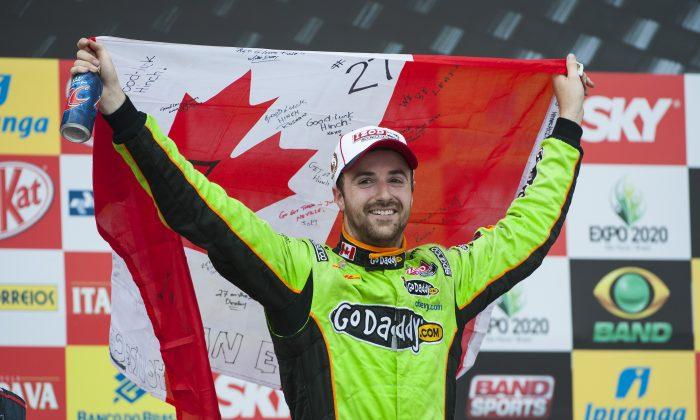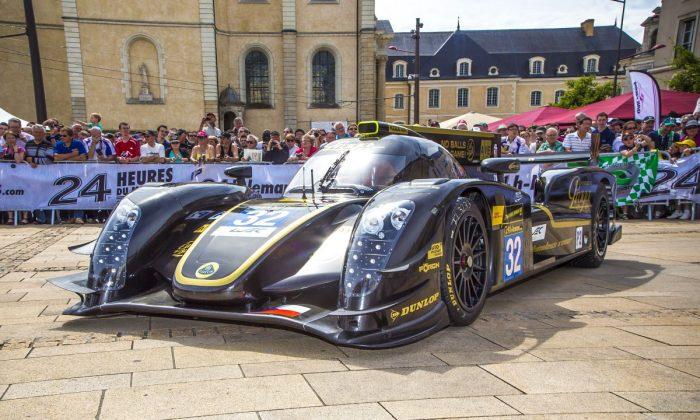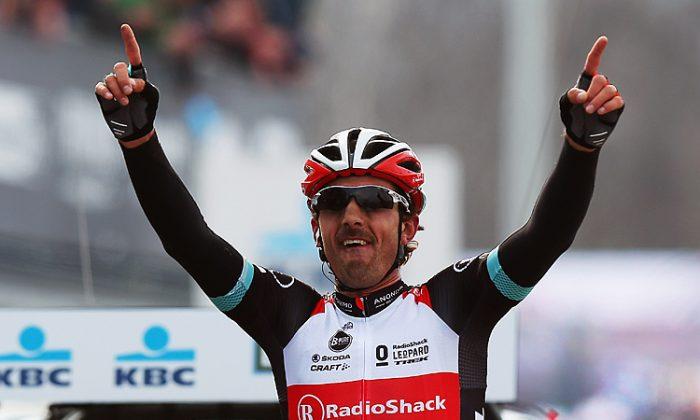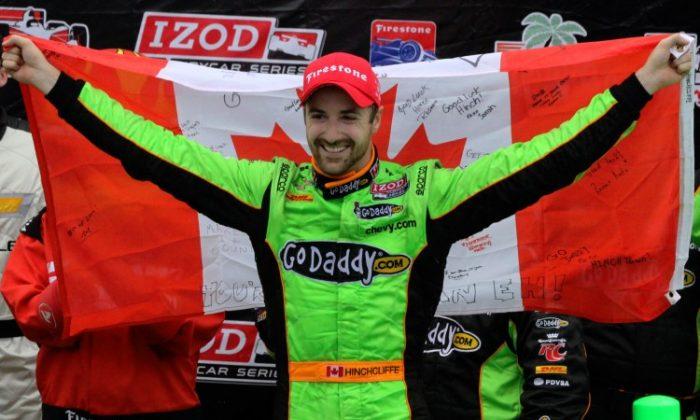The IndyCar Sao Paulo Indy 300 was one of the best IndyCar races of the 21st century. The competition was intense, the result unpredictable, and the entire affair was decided by masterful pass in the last corner on the last lap.
After 75 laps around the bumpy 2.5-mile, 11-turn temporary street circuit, less than a second separated the top four drivers. Foyt Racing’s Takuma Sato, fresh off his first IndyCar win at Long Beach two weeks ago, led the race on very tired tires, with Andretti Autosports’ James Hinchcliffe, whose first IndyCar win came in the season opener, was less than two-tenths of a second behind him.
Right behind this pair came 22-year-old Josef Newgarden, driving for the underfunded but excellently managed Sarah Fisher team. Newgarden had been pressuring Sato for several laps before being passed by Hinchcliffe, whose AA team mate Marco Andretti was closing fast on the youngster.
Hinchcliffe and Newgarden had been hounding the Foyt driver since he took the lead on lap 57, but Sato, in his several seasons in F1 had learned how to defend aggressively. Newgarden made a few unsuccessful attempts before his tires went off four laps from the finish; then Hinchcliffe charged past into second and he began harrying Sato.
Sato’s tires were toast; the Japanese driver needed all of his experience to keep his car ahead of his Canadian pursuer. Every time Hinchcliffe tried to overtake, Sato anticipated the move and blocked it. After three-and-a-half laps of failure, Hinchcliffe showed that he had racecraft to equal the Japanese veteran. Rather than moving inside at the end of the final straight, the Canadian driver set up to the outside of Sato.
Sato, seeing Hinchcliffe coming up on his left, eased over, forcing the AA driver wide. It was all part of Hinchcliffe’s plan; he braked early and cut back to the right while Sato, seeing the move, overbraked on the outside. Hinchcliffe got inside at the apex and accelerated away; Sato had killed too much speed and had to take the long way around the corner.
Hinchcliffe crossed the finish line .34 seconds ahead, having earned his second win by outfoxing the much more experienced driver.
“There’s no cooler way to win a race—in the last corner of the last lap,“ Hinchcliffe told indycar.com. ”Takuma was making that race car really wide and he was defending the inside pretty well, almost too well a couple times. He just outbroke himself just a little bit and I was able to do a high-low [pass] and got the win.”
For Hinchcliffe, the win was the second of the season and the second of his IndyCar career. To make it sweeter, it balanced out his two DNFs in the two races since his first win at St. Pete in March.
After the race the Mayor of Hinchtown showed the sense of humor which has made him one of the most popular drivers on the grid.
“I don’t always finish races,” Hinchcliffe tweeted, referencing a popular beer commercial, “but when I do, I prefer to win.”
The New Sato
Takuma Sato showed that his Long Breach win was no fluke. The new, calmer Sato and the new, competitive Foyt Racing make a great team. Sato wasn’t too calm; he couldn’t rein in his competitive spirit and ended up burning too much fuel forcing the team to change pit strategies mid-race. The team got lucky with cautions; Sato managed to get back to the front after being 20th on lap 47 but he had to stretch a set of Firestone Reds for 38 laps, which proved to be one lap too long.
Sato also made a couple of questionable near-blocking maneuvers while defending his lead in the closing laps. Thankfully race director Beaux Barfield opted not to hand out penalties, which would have destroyed a great race. Even though Sato vigorously defended, he did it in a safe and controlled manner.
No one could have complained if Sato had been penalized, but no one can really complain that he wasn’t. The same moves by a less skilled driver might have been dangerous, but Sato is an experienced veteran, and walked right up to the line between safe defending and dangerous blocking, without ever crossing.
His second-place finish was good enough to move Sato into the points lead, 13 ahead of Marco Andretti, who is seven ahead of former leader Helio Castroneves of Penske.
AA Redux
With the win Andretti Autosports continued its amazing comeback season.
Once part of the Big Three along with Penske and Ganassi, AA fell from grace in the middle of the last decade.
All that has changed. 2012 was a great year for the team, with Ryan Hunter-Reay winning the championship, and this year James Hinchcliffe has two wins, Hunter-Reay two poles, while Marco Andretti has finished in the top ten in every race.
Even E.J. Viso, normally associated with the words “is involved in another collision,” drove a sound race and finished sixth. Ryan Hunter-Reay might have won had he not been slowed by a puncture, but still managed to finish eleventh.
Andretti is now second in the points, Hinchcliffe fourth, Hunter-Reay sixth and Viso, 11th.
Best Race of the Century?
The Sao Paulo Indy 300 was a classic motor race.
In these days of hype and spin, much of what “happens” is just script writers and announcers who have a list of “talking points” and “story lines” which have to be played up to add depth to an event.
The Sao Paulo Indy 300 didn’t need any hype—it had all the necessary ingredients which make for a truly great race: great driving, lots of passing, good and bad breaks, unexpected heroes and victims, real joy and real tragedy, capped with a last-turn-of-the-last-lap pass for the win. The Sao Paulo 300 was the real thing.
The first two thirds of the race were exciting, but a record-setting seven caution periods slowed the action. To the organizers’ credit, wrecks and debris were cleaned up quickly; still, drivers, as they did at Long Beach, got too aggressive on restarts, causing several yellow flags second after the green flag waved following the previous yellow.
It didn’t matter; the final 25 laps offered enough excitement for a season. IndyCar, for all its financial and managerial problems, has finally found a formula which produces excellent racing. After only four races, 2013 is already the best season of the century, which is saying a lot because the whole of 2012 was previously the best.
In the off-season teams have learned how to make the new car work, and the drivers are all incredibly talented. Anyone on the track could win any race, which partially explains the issue with restarts: every driver is looking for every tiny edge, because that tiny edge might mean victory.
While each of the first there rounds of the 2013 IndyCar season were excellent, the Sao Paulo 300 was transcendent. Some magic chemistry between the cars, the drivers, and the rack—and the hyper-enthusiastic Brazilian fans—elevated this race to legendary status.
So many drivers made so many right-to-the-limit moves, so many drivers perfectly balanced aggression and control, so many drivers turned in race-of-the-year performances, that any driver not going above and beyond would have been left far behind. But no one got left. From the front of the grid to the back, every driver fought hard for every lap. The action up front was so intense it was hard to follow the tremendous drives turned in by Simona Di Silvestro, James Jakes, Charlie Kimball—every driver who finished the race, raced well.
All that, coupled with the all-out battles at the front of the field, made the Sao Paulo 300 possibly the best IndyCar race of this century—certainly of the past five years.
Good Luck, Bad Luck Winners, and Losers
The drama of the Sao Paulo Indy 300 started in the closing laps of the previous race at Long Beach, when KV Racing’s Tony Kanaan tore ligaments in his right hand in a late-race crash. Kanaan, a Brazilian native and national hero, came to Sao Paulo with a hand so painfully swollen he couldn’t even take off his driving gloves without help.
Kanaan had to perform for his home crowd but the pain and swelling made the hand almost useless. The bumpy Sao Paulo street circuit made it even worse. TK is tough, though. He had fans to please, so he drove with heart and will and qualified fourth.
Kanaan drove just as hard during the race, despite his pain. The KV Racing driver took the lead on the first restart, earning a huge roar from the fans. He lost three positions when his fueler fumbled on the next pit stop, and dropped back further while saving fuel because KV opted for a two-stop strategy, but got the green light to go hard after a couple of cautions changed the calculus.
Kanaan retook the lead on the lap 44 restart, again igniting the crowd, but he might have pushed a little too hard. TK ran out of fuel on lap 50 and had to be towed back to the pits. He eventually finished 21st, but even finishing, injured as he was, was a victory; to actually take the lead twice showed both his skill and his character.
There was more qualifying drama. James Jakes had an engine fire which halted one of the first sessions before championship contenders Helio Castroneves and Will Power could set times. This meant two of the fastest drivers in the field would have to start 18th and 22nd.
The bad luck continued in the race for these two Penske Racing drivers. Power had advanced ten places in ten green-flag laps before his car caught fire for a currently unknown reason, possibly an oil leak onto an exhaust header. Power, who has come so close to winning the championship in the past three years and has won all three Sao Paulo IndyCar races, saw his day end on lap 18. Coincidentally, he ended up 18th in the points; his championship hopes have to be pretty dim after Sao Paulo.
Helio Castroneves also had a tough race. Will Power, pushing to the limit and a little beyond in an effort to make up places, had to lock up his brakes on the lap ten restart to avoid hitting Alex Tagliani. Castroneves hit his team mate, breaking Helio’s front wing.
Helio went too hard into Turn One on the next restart (with a record-setting seven cautions, there were plenty of restarts) and had to take the escape road, costing him track position. Worse was to come.
On the next restart, on lap 26, Helio got squeezed by Simon Pagenaud. Castroneves had to ease right to avoid contact, but this put him right in the path of Scott Dixon who was charging up the inside. Dixon nudged Castroneves into Pagenaud, spinning the Penske car and ripping the wing off. Helio went from eighth to 23 in a few seconds as the field streamed by his stalled car. He finished 13th—a great comeback drive, but where might Helio have finished had a little luck come his way?
Castroneves had been leading the points race coming into Brazil; he leaves a respectable third, but again, with a little luck …
Andretti Autosports had the whole range or highs and lows, good and bad luck just among its four drivers. Defending champion Ryan Hunter-Reay started on the pole, led early, and dropped back with a flat tire, keeping the 2012 champ from claiming his first win of the new season. Hunter-Reay ended up 11th—pretty impressive considering he was 21st on lap 48 after pitting for the puncture, but a huge disappointment for HR and the team.
On the other hand, Hinchcliffe won and Marco took third, both with last-lap passes, while Viso in sixth gave the team three cars in the top ten.
Ganassi had another mixed weekend this race both cars worked well, which is a step forward, but bad luck sent Dixon back in the pack.
Dario Franchitti never challenged for the lead but was up front throughout the race. His seventh-place finish is good, considering the season he had been having. Team mate Scott Dixon was also quick, but a broken wing from a late-race collision dropped him to 18th at the finish. Not a great showing for the team which once dominated IndyCar, but an improvement in performance if not in results. At least both drivers found a good set-up at Brazil.
On to Indy
And now it is on to Indy. Street and road courses are forgotten as everyone focuses on the biggest race of the season. The Indianapolis 500 will also be the first oval race of the season, which means the teams will have to learn a lot in the next two weeks. The way things have been going, the Indy 500 is guaranteed to be a great race, and it is also guaranteed that almost any driver who starts could finish first.
Live coverage of qualifying and the race will be on ABC TV. Tickets can be ordered through the Indianapolis Motor Speedway website, http://secure.brickyard.com.



